Anglo-Saxon and Viking designs in LOTRO
I was recently intrigued by a post on the forums, where someone had spotted the fact that the famous Gotlandic picture stone depicting Sleipnir and a Valkyrie had been used, very cleverly, as the new superior scholars craft object. I had noticed this with the Great River expansion, but hadn’t, incorrectly, actually considered it of much interest to other people. For those of you who don’t know, my real life profession is an Archaeologist, and like many archaeologists the world in which I work sadly has far more to do with cold wet muddy fields in Yorkshire than expeditions to the Congo and Egypt, and more trawling through computer files and boxes of dull 19th century pottery than meticulous work under microscopes on ancient artefacts… however it does have its moments, and does have some uses in Pub quizzes and geeking out in computer games like LOTRO.
A period I have always loved, and been fortunate enough to work on sites from, is the Early medieval period in Britain, often called the Anglo-Saxon or Viking period. This era stretched from just after the Romans relinquished control of the lands they occupied in the British Isles around the beginning of the 5th century, to the 11th century following the conquest of Britain by the Normans (themselves actually descended from Vikings) over a period of years after 1066. It was a period dominated by the Pagan originated cultures of Norway, Denmarks, Sweden, the Netherlands, and Northern Germany, and is a period from which in Britain, and abroad, many of the historic texts Tolkien loved originated, and many of the cultures he designed had their roots.
Working on any period in archaeology means you build up a mental collage of designs and objects from the period of study.This is especially true when you have a finds specialism as I do, where over time you build up a mental reference library of information and images from which you draw parallels, and avenues of research, and comparison, to the current objects you may be studying. I have often recognised designs in LOTRO clearly influenced by actual historical styles and designs, and the Rohan expansion is no exception, drawing on Saxon and Viking age imagery more than ever, so I thought I’d take this opportunity to point a few of the more tangible and recognisable ones to you.
The below image is taken from the Cliving mead hall, and the dark design on the pillars is a texture used in Rohan, and is immediately recognisable as a piece of Urnes style art from the late viking period (11th-12th century), usually found on stave churches.
Compare it with the below panel from the actual stave chruch at Urnes
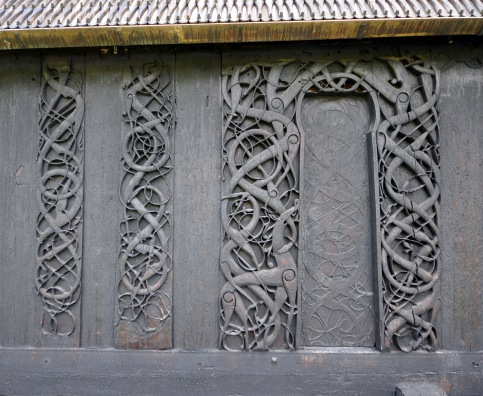
I am fairly certain that the texture is actually a Photoshop manipulated version of this carving, as I can see the same tendrils and terminals as on the above examples, though it has been carefully Photoshopped to form a closed figure of eight, more suitable for game textures (I sure hope they paid their usage fees if they got it off the web!). You will see this texture tweaked and reworked, again and again, in Rohan, from small details and architectural features, to chunks of barge boards on building eaves, but especially in Cliving where it forms a large percentage of the textures used.
Another nice touch are the following carvings, found even more commonly. You can see the largest unmanipulated chunks on the large pillar to the right of the door, and the diagonal beams in the roof, and more heavily manipulated on the pillars and other surfaces.
Theses are clearly derived from a beautiful series of acanthus scroll carvings (a sample image of them below), also from a Norwegian stave church, and particularly these examples from Heddal stave church in Norway (also below). As before there has been a lot of manipulation and Photoshop work to stitch these together and adapt to a usable pattern, but there are still large and readily identifiable portions, and they can be seen on many elements from beams and eaves boards, to the Rohan milestone.
Next up we have some rather odd, but perfectly period appropriate designs, though perhaps a little less more clumsily added to the objects in the virtual world. Obviously the below image from Meduseld itself has some more Urnes artwork manipulated for its top border, but it is the circular and oval motifs forming the border below that most interest me.
As you can see below, the central oval portion with the green ‘gem’, is simply this image below of a 9th-10th century viking oval brass brooch, worn by women in pairs to hold up their dress, possibly named a Smokkr… though often called slightly erroneously a hangerok by reenactors. Indeed, I think it is literally just this image with the central portion turned green.
The two circular designs flanking are extracted from the next object, which also adorns many surfaces in Meduseld, from the gate, the fixtures, to the king’s throne itself. Again you can see the Urnes designs worked into the walls, but what I ask you to look at here is the metal work and hinges on the doors.
Here you can see similar designs on the top edge of the king’s throne, with red and green highlighted gems
And finally, on the main pillars in Meduseld, the full object is visible, with highlighted bosses, again with our Petersen P51 oval brooch behind it.
This is, of course, the fabulous belt buckle set from the Sutton Hoo burial (below), buried in the 7th century, and probably belonging to Raedwald, the King of the East Anglians and High King of Britain, who was, interestingly enough, actually from a Swedish dynasty called the Wuffingas.
If you keep your eyes open you will see these designs again, and again. You will also spot that many of the building in Rohan are remarkably similar to Norwegian Stave churches and Saxon buildings. One of the great strengths of Peter Jackson’s adaptations of Tolkiens works, is his art departments ability to look carefully at historic cultures that influenced Tolkiens writing, and use these as an inspiration for their designs, and it seems Turbine is doing similar, which I can only applaud… only next time guys, please try to make it look a little less like you cut and pasted a belt buckle onto things!
For those of you wondering if this is a new method by Turbines art department, please take a look at the following screen shot taken many moons ago of the floor in Mordiriths room in Angmar, specificallythe circular thing we are stood on:
… Heres a closer pic under our feet
Finally, here is an image of the 9th century Anglo-Saxon Strickland brooch …familiar at all?
Posted on December 19, 2012, in Cosmetics, Lore. Bookmark the permalink. 10 Comments.
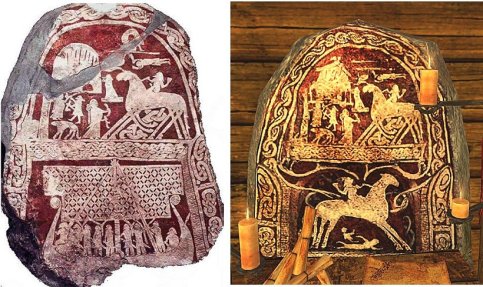
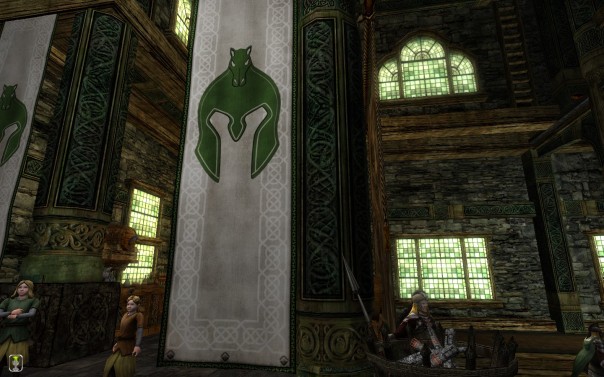
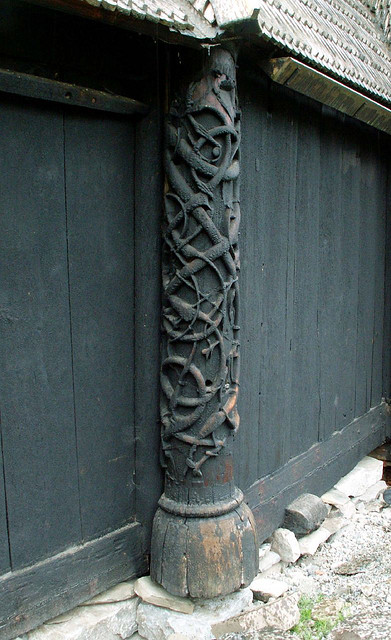
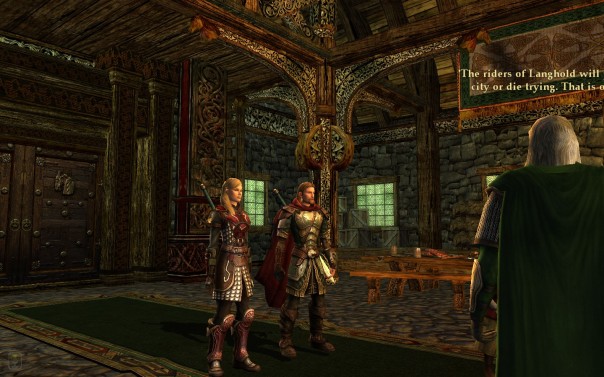
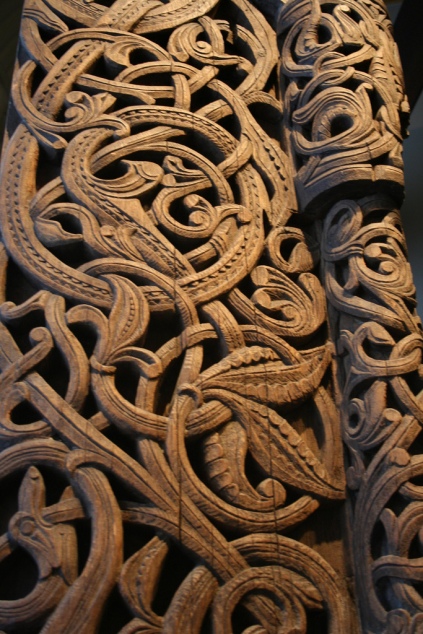
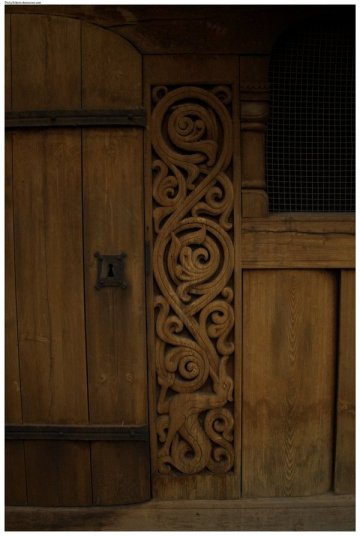
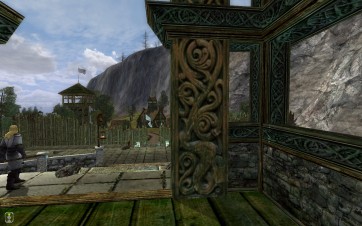
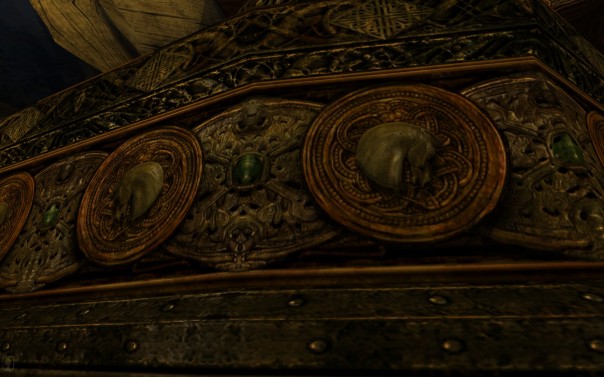
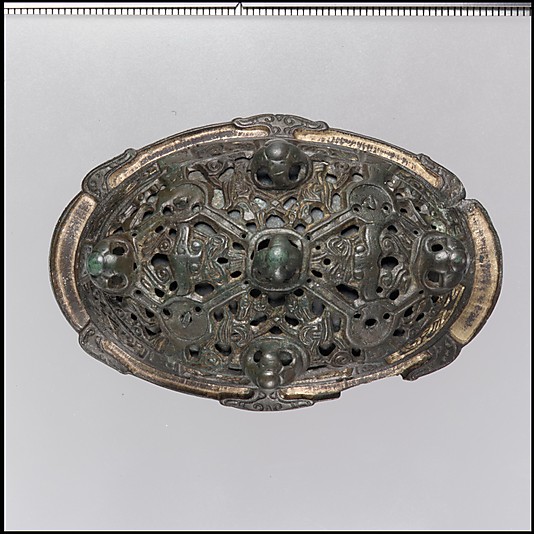
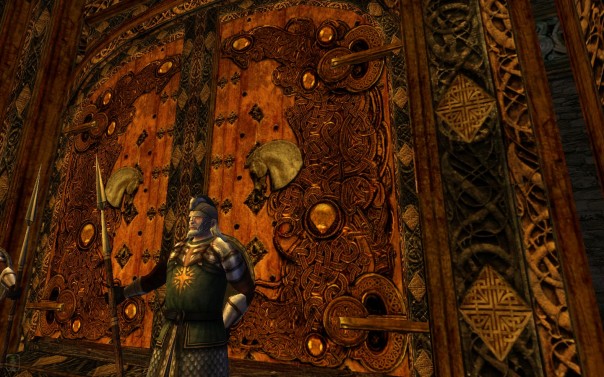
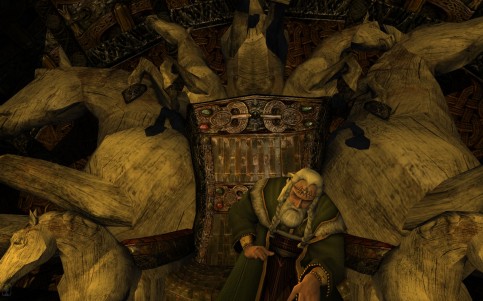
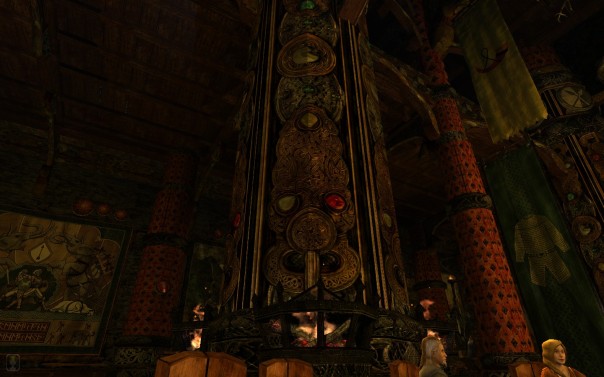
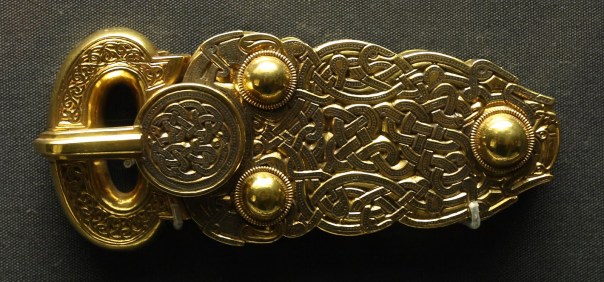
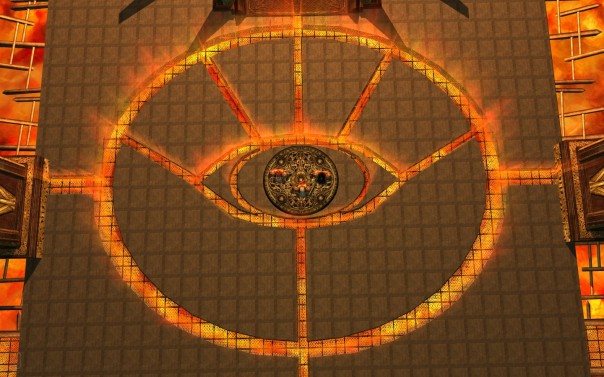
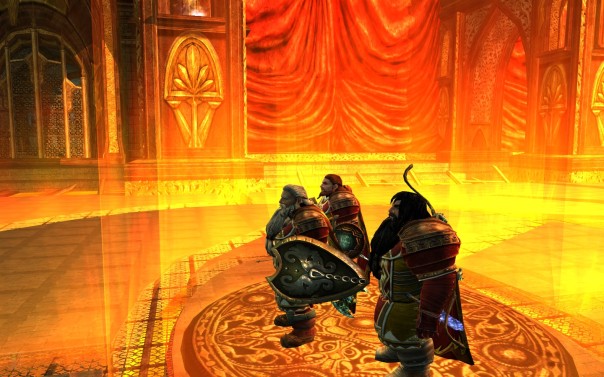
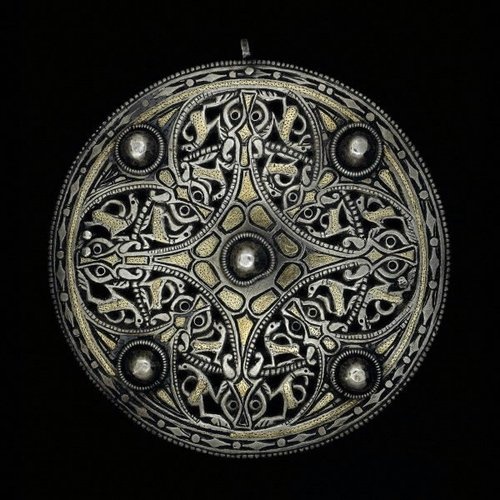
Fascinating article! One of the things I definitely love most about LotRO is the depth of immersiveness this type of care gives the game.
I disagree, though, with the view that using items such as the belt buckle without much modification is in any way a “bad” thing. If it works (and I think it looks amazing) then I don’t think there’s an issue. I don’t have a deep need for every single thing to be entirely original. If little things like that save someone time that they can then put into adding more detail elsewhere, so much the better.
Its not the lack of originality at all, or thinking its ‘bad’, its just the fact that its a belt buckle shape, stuck on a wall, its a little crude and thoughtless, at least what they did with the buckle on the door uses the motifs cleverly.
interesting read thank you and loved seeing the photographs of the originals / inspirations 🙂
I had a similar experience with one of the tapestries in game (the pastoral scene seen in Stangard and I’m pretty sure in other places too), its a direct copy of one of the Flemish tapestries. As well as being sure that I’d seen it before, I think it also stood out as this style of tapestry was common around the 14th century, which is clearly later than the period you mention (former textile conservator here ;))
Thank you for that! In a medium that seeks to create entertainment from evermore horrific and grotesque images, here alone we find echos dating back 1500 years or more of uncompromising quests to reveal and create beauty. And true to the source material too. As everyone who loves it knows, its author was not exactly enamored with modernity 😉
I have always been impressed with the efforts of the Turbine Art team, this is just one example of why really, they do their homework and clearly love their job.
By the way, have you spotted all the Mjollnirs on a lot of the window shutters inside Rohan buildings? I first noticed this in Stangard buildings.
I have not, I shall go and have a look, and see if it has a real world parallel!
Whoa, a fellow archaeologist playing LotRO! This is such an amazing article!
I did notice the scholar thing (having spent many an hour crating stuff there), but hadn’t looked in detail to the motives of buildings. Pretty much fun (although putting brooches on pillars – perhaps a bit strange?).
Also, digging in rainy Yorkshire sounds more fun to me than in Egypt or Congo, but perhaps that’s just me. ^^
Thanks for the comment, yes, I’d have to agree, the weather might not be ideal, nor do we get as much shiny stuff, but the actual archaeology is the most interesting to me over here!
Pingback: Episode 177: Yule Stool | Casual Stroll to Mordor